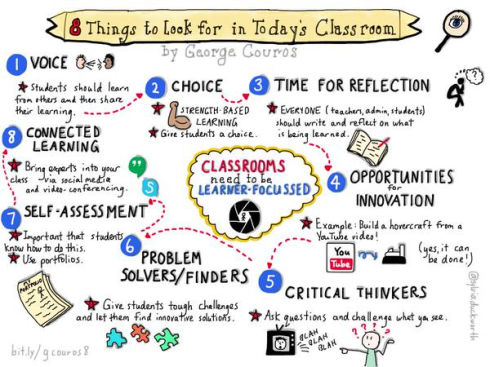This note refers to an article posted on Edutopia at this link. It originally was posted on the P21 Bloagazine.
My friend from #LangChat and ACTFL conferences, Marilynn Mansori, has posted a great article on Edutopia! I recommend it to you. The link is posted above.
A quick summary of her note follows.
These four ideas can help teachers start building student voice and choice into language learning.
- Use an inquiry approach to language instruction.
- Employ personalization strategies that allow students to see themselves in what they learn.
- Make the learning relevant to the students.
- Invite students to make local and personal connections with the language they study.
To these four points, I would add a 5th, which Meriwynn agreed, is also important for an inquiry-based approach to language learning.
#5. Choose themes of global importance.
Students want to know that they can make a difference in the world. How can we create units which shift the traditional WL curriculum from the typical units of family, food and sports, to more challenging global themes such as world hunger and nutrition, or healthy living in diverse communities?
I love the power of collaboration. Thanks Meriwynn for an inspiring post!
Upon further inquiry on the topic of voice and choice, I came across this excellent infographic by George Couros, and a blog piece by him at this link, on his website, The Principles of Change.
George states:
As I think that leaders should be able to describe what they are looking for in schools I have thought of eight things that I really want to see in today’s classroom. I really believe that classrooms need to be learner focused. This is not simply that students are creating but that they are also having opportunities to follow their interests and explore passions. The teacher should embody learning as well.
George advocates for a new kind of classroom interaction and learning, one in which these eight characteristics are visible and normal:
- Voice
- Choice
- Time for Reflection
- Opportunities for Innovation
- Critical Thinkers
- Problem Solvers/Finders
- Self-assessment
- Connected Learning
That’s what PBLL looks like, and why I love it! I recommend these resources, and there will be more to come. Stay tuned!

Leave a comment